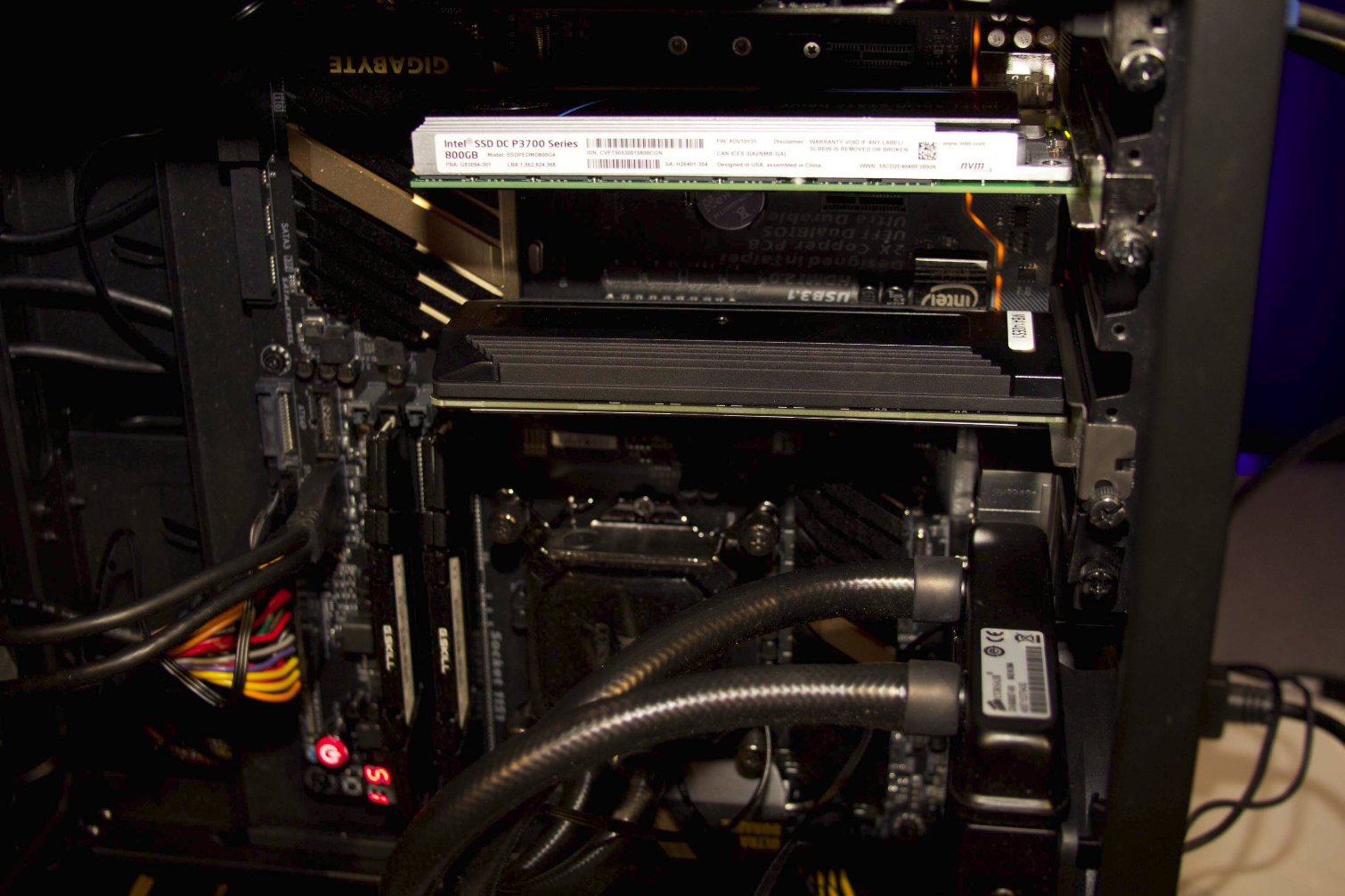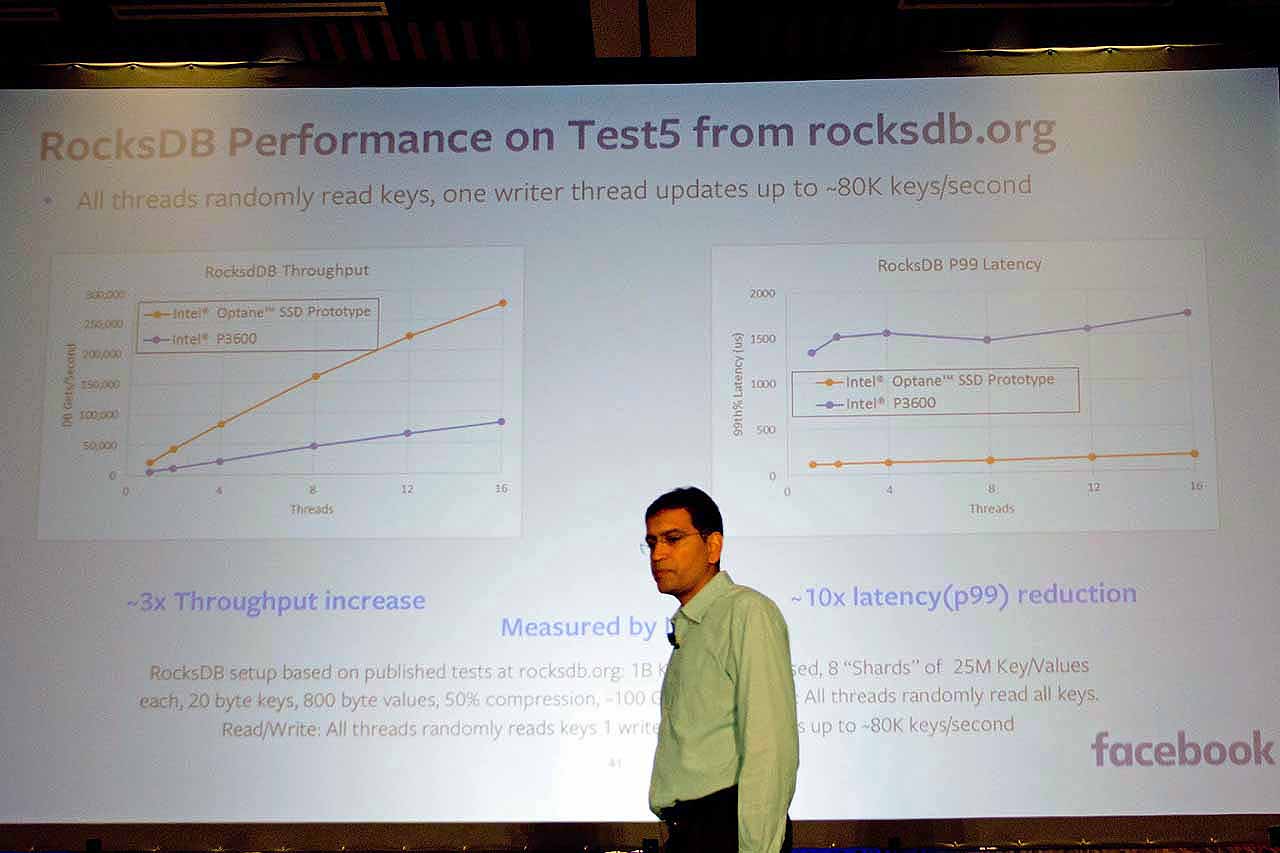Intel Experiences PC Growth, 3D XPoint Samples Shipping By The Thousands
Intel recently provided updates to its stance in the PC market and its 3D XPoint launch schedule during its 3Q2016 earnings call. The company also updated its investors on the status of its new China-based Dalian fab, which it opened to return to memory manufacturing after a 31-year hiatus.
The PC Does...Better.
Intel's financials revealed that the company is on a pretty solid financial footing; it continues to make gains in several core areas, such as its PC business, which experienced 4.5% year-over-year (YoY) growth (a 21% quarter-over-quarter increase) with sales of $8.9 billion. Intel's PC gains are partially due to suppliers building inventory as well as a hike in the ASP (Average Selling Price). Intel's positive news comes amidst the backdrop of yet another gloomy Gartner report that indicates that PC shipments continued to decline for a record-setting second year.
Intel also managed to score $59 billion in revenue with a gross margin of 63%, which is an important gauge of the company's health in the wake of its far-reaching restructuring efforts that saw the company bid farewell to 12,000 employees (11% of its workforce).
"Thousands" of 3D XPoint Samples Shipping, 3D NAND Flowing In China Fab
3D NAND and 3D XPoint are both key tenets of Intel's strategy as it continues to diversify its portfolio amidst the somewhat stagnant PC market.
"As we said, and I think Stacy said...as well, in our Dalian China Factory, we are now running wafers, the yields are quite good. They’re as good as our existing factories," said Brian Krzanich, Intel CEO.
Intel noted during its Dalian announcement that it intends to produce both 3D NAND and 3D XPoint at its China-based Dalian fab, which signifies Intel's first solo memory production since 1985. Krzanich noted that the Dalian fab is producing wafers with strong yields, but it's unclear if he was referring solely to 3D NAND, or to 3D XPoint, as well.
"On the 3D XPoint, it will be qualified at the end of this quarter. And we’re shipping thousands of samples to customers. We’re shipping samples already; we’ll ship thousands through this quarter. And it ramps in 2017...So, ramp in ‘17, revenue growth in ‘17, samples, thousands in the fourth quarter and qualified at the end of the quarter," Krzanich stated.
Get Tom's Hardware's best news and in-depth reviews, straight to your inbox.
In either case, it appears that things are moving along nicely on the 3D XPoint front, which we know Intel and Micron are jointly producing at the IMFT (Intel/Micron Flash Technologies) fab in Lehi, Utah.
Recent document leaks indicate that Intel is also preparing low-capacity 16GB and 32GB Optane products for the desktop PC market, which will likely be used as caching devices, but we haven't been able to verify their authenticity.
Krzanich's statement doesn't mesh perfectly with Intel's previous statements. Intel is producing 3D XPoint for both consumers and enterprise users, but development seems slow on the enterprise side. At IDF 2016, Intel announced that it would provide early access to cloud-based Optane (its brand name for 3D XPoint products) platforms by the end of the year. Intel's announcement that it would provide cloud-based access this year, in contrast to its earlier statements that it would ship physical products this year, is likely due to its cloak-and-dagger approach to the 3D XPoint rollout. Intel still hasn't announced exactly what 3D XPoint is, so the in-house strategy using cloud-based platforms makes sense to avoid competitors (or pesky journalists like us) from analyzing the new combined storage and memory product.
Intel is working closely with Facebook, which announced at the Flash Memory Summit that it's working with Intel's new memory, but no other company has indicated the same. As such, it's likely the samples are headed to very few key data center partners for now, so Krzanich's statements that "thousands" of samples are shipping this quarter may lend some credence to claims that 3D XPoint is speeding its way to a desktop near you.

Paul Alcorn is the Editor-in-Chief for Tom's Hardware US. He also writes news and reviews on CPUs, storage, and enterprise hardware.
-
ssdpro Get your cards ready for preorders of that 32GB optane drive. Once you install Windows 10 you'll have a whole 8GB left. Or use it as a mediocre cache drive like it's 2010.Reply -
memadmax Come on AMD, if there was any time to come thru, this is it.Reply
Been waiting for you to answer intel for quite some time, don't fail now. -
PC-Cobbler Paul Alcorn wrote: " intends to produce both 3D NAND and 3D XPoint at its China-based Dalian fab, which signifies Intel's first solo memory production since 1985" and "3D XPoint jointly producing at the IMFT"Reply
Regardless of whether the Dalian fab is creating 3D NAND, 3D XPoint, or both, the IMFT relationship must be like an open marriage, with all new products subject to the partners' whims, though I suspect most of the infidelity lies on Intel's side of the bed given its non-participation in 16nm NAND. After reading this article I wondered about the level of cooperation with 3D NAND, but the first link below shows that IMFT is still in play there. It doesn't add up; why would Intel manufacture the same thing in an Intel-only facility? Either Intel expects customers to beat its doors down with demand that cannot be handled via IMFT or it is planning a special version of either 3D NAND or 3D XPoint.
Micron and Intel Unveil New 3D NAND Flash Memory
https://newsroom.intel.com/news-releases/micron-and-intel-unveil-new-3d-nand-flash-memory/ -
Paul Alcorn Reply18759008 said:Paul Alcorn wrote: " intends to produce both 3D NAND and 3D XPoint at its China-based Dalian fab, which signifies Intel's first solo memory production since 1985" and "3D XPoint jointly producing at the IMFT"
Regardless of whether the Dalian fab is creating 3D NAND, 3D XPoint, or both, the IMFT relationship must be like an open marriage, with all new products subject to the partners' whims, though I suspect most of the infidelity lies on Intel's side of the bed given its non-participation in 16nm NAND. After reading this article I wondered about the level of cooperation with 3D NAND, but the first link below shows that IMFT is still in play there. It doesn't add up; why would Intel manufacture the same thing in an Intel-only facility? Either Intel expects customers to beat its doors down with demand that cannot be handled via IMFT or it is planning a special version of either 3D NAND or 3D XPoint.
Micron and Intel Unveil New 3D NAND Flash Memory
https://newsroom.intel.com/news-releases/micron-and-intel-unveil-new-3d-nand-flash-memory/
The IMFT relationship is an odd one, Intel and Micron hold hands on the manufacturing side but compete on the open market with the end products. Everything isn't rosy, many predict the relationship will end when when it comes up for renewal next year, and Intel's Dalian fab may add some heft to those rumors.
Intel skipped investment in Micron's 16nm NAND, which was an interesting development that led to lots of speculation. Here is a piece covering some of that,
http://www.tomshardware.com/news/intel-micron-3d-nand-ssd,28839.html
and then here is more coverage on the topic of Intel's fab, and how that plays into the picture, as well.
http://www.tomshardware.com/news/intel-micron-3d-nand-xpoint,30378.html -
TerryLaze Reply18757247 said:Get your cards ready for preorders of that 32GB optane drive. Once you install Windows 10 you'll have a whole 8GB left. Or use it as a mediocre cache drive like it's 2010.
Those are for cheapo netbooks,wait for the ddr4 slot options coming out next year.
Although having win10 on an optane and keep using your normal ssd is also an option. -
wifiburger no way I don't believe it, put a nice chart of your sales Intel vs Population growth over the last 3-4years and lets see how much sales increase you have !Reply -
WhatTheWhat95 I know a guy who works at the IMFT facility. He believes that 3D-XPoint will be one of the most significant changes to computing in the last decade. They are probably needing the additional manufacturing capacity. According to him though, they were ready to ship chips at the end of 2015, they've just been waiting for a new interface to take full advantage of the speeds.Reply -
nuttynut This doesn't say anything about the product launch being pushed back to 2018-2019, as reported by NCIX Tech Tips: https://youtu.be/FTflHDbZBXM?t=19s. Not sure what the real story is now.Reply

